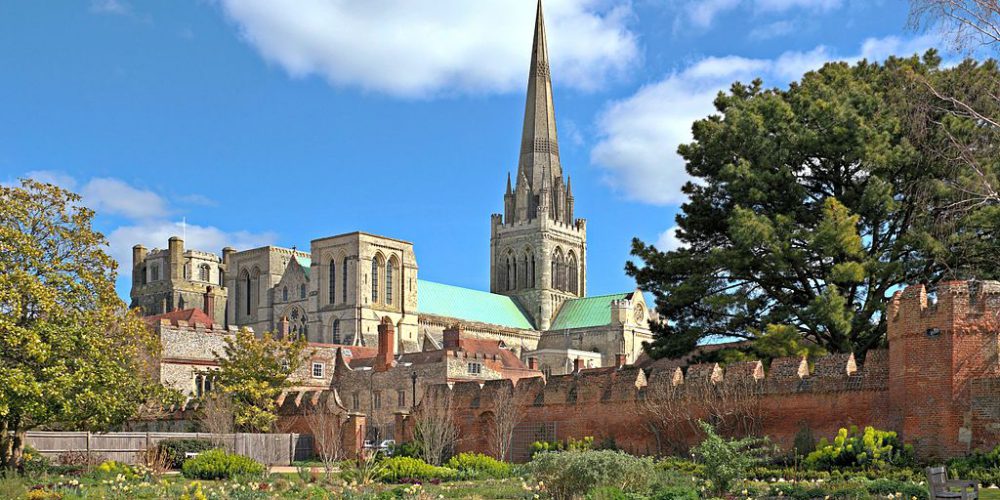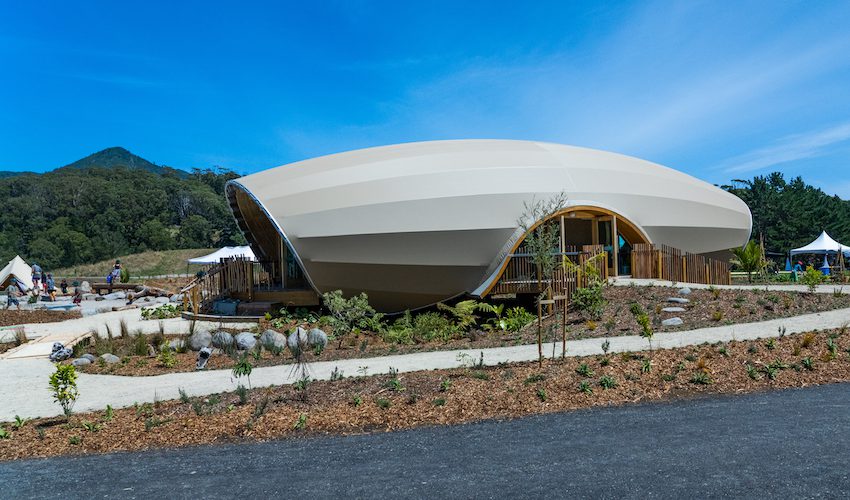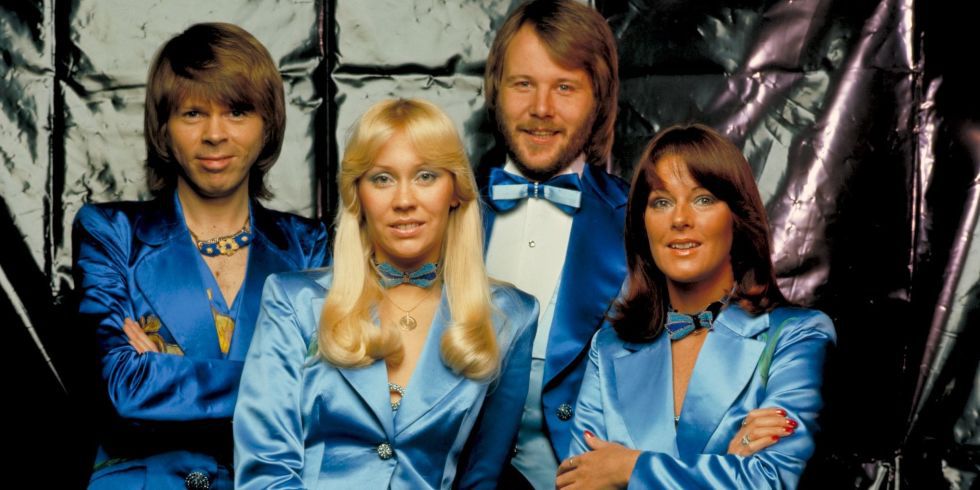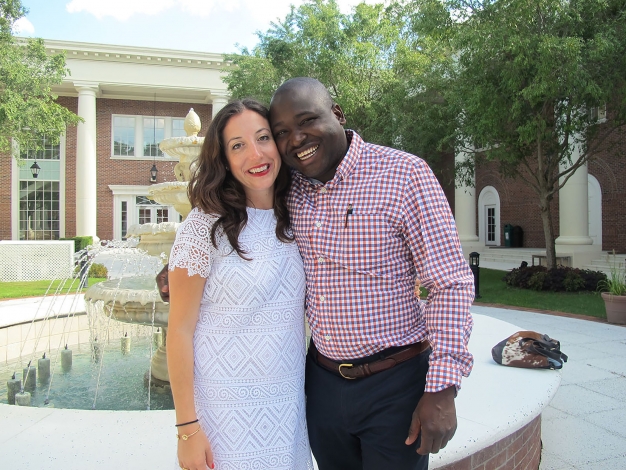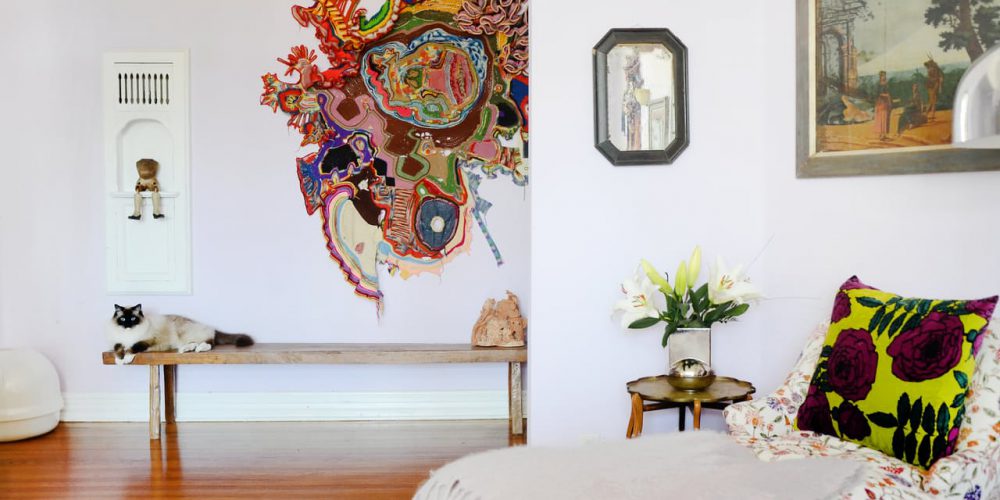“Watching Spanish-language TV makes me feel like I am at home, in my country”

According to a Nielsen study, “Attitudes on Representation in Media,” 72% of Latinx say that it’s very important to watch content in their own language and 69% of Hispanic adults say local TV news is a reliable source of information. Nielsen measures audiences and media consumption trends around the world.
Spanish-language television plays an important role in immigrant communities who don’t speak English, as well as bilingual families. Each relies on it as a source of news.
Now, some of the female broadcasters who pioneered Spanish- language television are being recognized in a new exhibit at the National Museum of American History, at the Smithsonian Institution in Washington, D.C.
“¡De última hora! Latinas Report Breaking News” is a bilingual experience. The exhibit includes names that may not be familiar to many TV viewers, but who are household names in Spanish-language and bilingual families. It highlights the work of María Elena Salinas, Blanca Rosa Vílchez, Dunia Elvir, Marilys Llanos, Gilda Mirós, Lori Montenegro, and Ilia Calderón – former and current TV journalists.
Melinda Machado is a co-curator, she says these women “serve as the face, the trusted source and voice for Spanish-speaking communities in the U.S.” Their stories embody those of many hundreds of women who work in broadcasting, she says.

As visitors enter the gallery, they hear a familiar voice coming from a bilingual video: “Latina journalists are always there, covering breaking news,” says María Elena Salinas in Spanish.
The idea for “¡De última hora! Latinas Report Breaking News” began about seven years ago with a project called “Escúchame” or “Listen to Me,” which documented the history of Spanish-language television across the country through oral histories from former and current TV station employees.
The museum has done significant research and documentation on the origins of Spanish-language broadcasting, and it’s the first time it features female Spanish- language television journalists. The focus is on the impact of women journalists in their communities.
Machado says Spanish-speaking communities see themselves represented in Spanish-language TV news and that’s one reason people trust the information much more than they trust English-language news, “trust is a singular difference between mainstream and Spanish-language TV news.”
News in Spanish serves their community
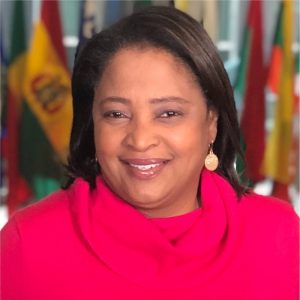
On a recent early morning, Dulce Vida Bakery in Hyattsville, Maryland, is bustling with activity. Customers pick up pastries and tamales and a long line snakes to the back waiting to pay. Most here are not aware of the Smithsonian exhibit a few miles away, though when asked about their Spanish-language TV news habits some are eager to share them.
“I can’t imagine life without Spanish-language news,” says María Torres. She watches both Univision and Telemundo news. “I trust them. That’s one of the best things you have living in this country – you have access to reliable information.”
Honduran-born Torres has lived in Maryland for more than 20 years. “I’m interested in news about immigration, healthcare and social security, among other things,” says Torres, in her native Spanish while holding a bag of semitas, traditional Latin American pastries made with unprocessed sugar cane and raisins.
Miguel Camacho, a plumber who lives in Takoma Park, Maryland, is at Dulce Vida to get chicken tamales. He says, “I’ve always liked watching the news.” He too watches news on the two main Spanish-language networks, he says. “If we didn’t have Spanish-language TV news, we wouldn’t know anything that’s happening,” Camacho says. “We wouldn’t know what the government is doing in terms of immigration, the borders, politics. We wouldn’t know about the current war in Israel!”
Mexican-born Camacho says he studied English when he first came to the United States about three decades ago, but he prefers to watch news in Spanish “because I understand all the nuances of what’s being reported and I can miss somethings in English.” Miguel Camacho says he can’t imagine life without Spanish-language TV news. He says he trusts Spanish-language TV hosts and reporters. “They look like us. It also makes me feel like I am home, in my country.”
When asked who his favorite personality is, he doesn’t skip a beat. “I miss María Elena Salinas,” he says. “She’s thoughtful and conscientious, she inspires trust in me,” Camacho says. Salinas is a former Univision News anchor and one of the most acclaimed Spanish-language television news personalities.

Latina journalists get their due, but not without struggle
Back at the Smithsonian exhibit hall you hear the authoritative, yet warm voice of Salinas. “Latina journalists are always there, covering breaking news,” she says in a Spanish video with English subtitles. “We feel a deep responsibility, not only to inform, but also to help the community understand and navigate our complex reality.”
Salinas spent 37 years with Univision and says that Latina journalists have reached far, “but they still face unrealistic beauty standards, gender discrimination and different expectations than male reporters.” She’s currently a contributor to ABC News. “And there is still sexism and racism on and off camera,” Salinas adds. “Despite the many barriers Latina journalists on television have broken, there is still a long way to go, but I know we are up for the challenge because our community deserves the highest quality news.”
Exhibit organizers didn’t have in mind a particular target audience, but co-curator Machado says, “We want to reach across audiences.”
Vedant Trivedi is visiting from New York City. He says he’s here because he’s a “huge history buff” and feels lucky to have stumbled onto the exhibit. “I think it’s a really beautiful exhibit, and it’s nice to see the Smithsonian giving representation to our country’s diverse communities,” says Trivedi, whose parents emigrated from India in the 1970’s. He’s a trained economist who studied Spanish for more than a decade.
Trivedi says the exhibit does a good job of “telling stories of Latinas and the story of America.” And that’s important, he says, because “You can’t tell the story of America without including the stories of the immigrants who came here and built it.”
Trailblazing Latina journalists shine a light in their community
The story of these seven female journalists is depicted with each covering a moment in history, including immigration marches, political debates, Cuban rafters, terrorist attacks, and Black Lives Matter protests, among others.
“Blanca Rosa Vílchez was one of the very first journalists on the scene in New York City, not only watching the Twin Towers fall,” on the morning of September 11, 2001, says Machado, “but running for her life.”
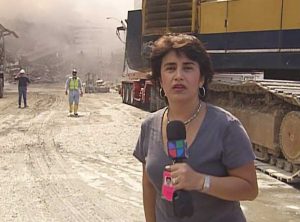
Vílchez is a Peruvian-born national correspondent for Univision News. The outfit Vílchez was wearing on 9/11 is displayed in a glass case – a deep blue jewel-toned blouse with a black jacket. “She picked it because she was going to do person-on-the-street interviews for a primary election,” Machado says. “She ended up wearing it for about three days at ground zero.”
The space is relatively modest, about the size of half a tennis court. But it does give you the sense that Spanish-language news is an intricate part of U.S. history. The exhibit displays scripts, press credentials, a can of hairspray, clothing, shoes – including a pair of hand-painted white tennis shoes that reflect the life of Telemundo journalist Dunia Elvir – and pictures of the women interviewing high-profile subjects as well as ordinary people.
Machado says that one of the exhibit’s goals is to highlight the difference between Spanish-language and mainstream news. “Latina journalists inform and advocate for their community,” says Machado, who sees that as positive. She attended journalism school and says that she learned that objectivity in journalism can be ambiguous.
“If you really look across history, it is sort of its own myth,” she says. She pauses and chooses her words carefully. “Who’s the first quote? Who’s the second quote? Who’s not quoted in a news report,” she asks. “There are still human beings making decisions. We’re telling two sides of a story. Well, maybe there are three sides.”
Latinx still fighting for representation in mainstream media

“I’m a native of the border community of Nogales, Arizona. Nogales, Mexico,” says Carlos Parra, a post-doctoral fellow at the University of Arizona. “And I grew up watching Spanish-language news with my grandparents.” He says his parents watched mainstream news, but for him watching Spanish- language TV has always felt more like home.
Carlos Parra says the Latino community in the United States is not monocultural. “Univision and Telemundo appeal to a pan ethnic Latino identity that transcends cultural differences between nationalities.” “This is our news and they are talking about us,” says Parra.
He says that mainstream news in the United States rarely includes Latinos in its coverage, and when it does, Latinos are not shown three-dimensionally. Parra is a third-generation American who’s bilingual and bicultural, and says that who’s in newsrooms matters because those are the people who make news coverage decisions. “There is a lack of texture and context in English-TV news covering Spanish- speaking communities,” says Parra, citing current coverage of Venezuelan migrants. All we hear is the migrants are coming, says Parra.
Parra is thrilled that the contributions of Latina journalists in Spanish-language TV news are getting recognized.

Though he says that as a consumer and researcher of the medium, the networks need to evolve, they need to produce programming to attract younger, Spanish-speaking recent immigrants as well as less Spanish-proficient Latinas/Latinos, often third or fourth generations removed from the immigrant experience.
“It needs to be more inclusive,” 36-year-old Parra says, referring to coverage. Telemundo and Univision tend to be geared towards an older audience, he says. “Is there room on Spanish-language TV for Spanglish? Or even for occasional English-language programming that’s Latino specific?” asks Parra. He thinks it can be done.
“¡De última hora! Latinas Report Breaking News” exhibit opened in October at the National Museum of American History in Washington, D.C. and it runs through May 2025.
By Gilbert Castro | ENC News



